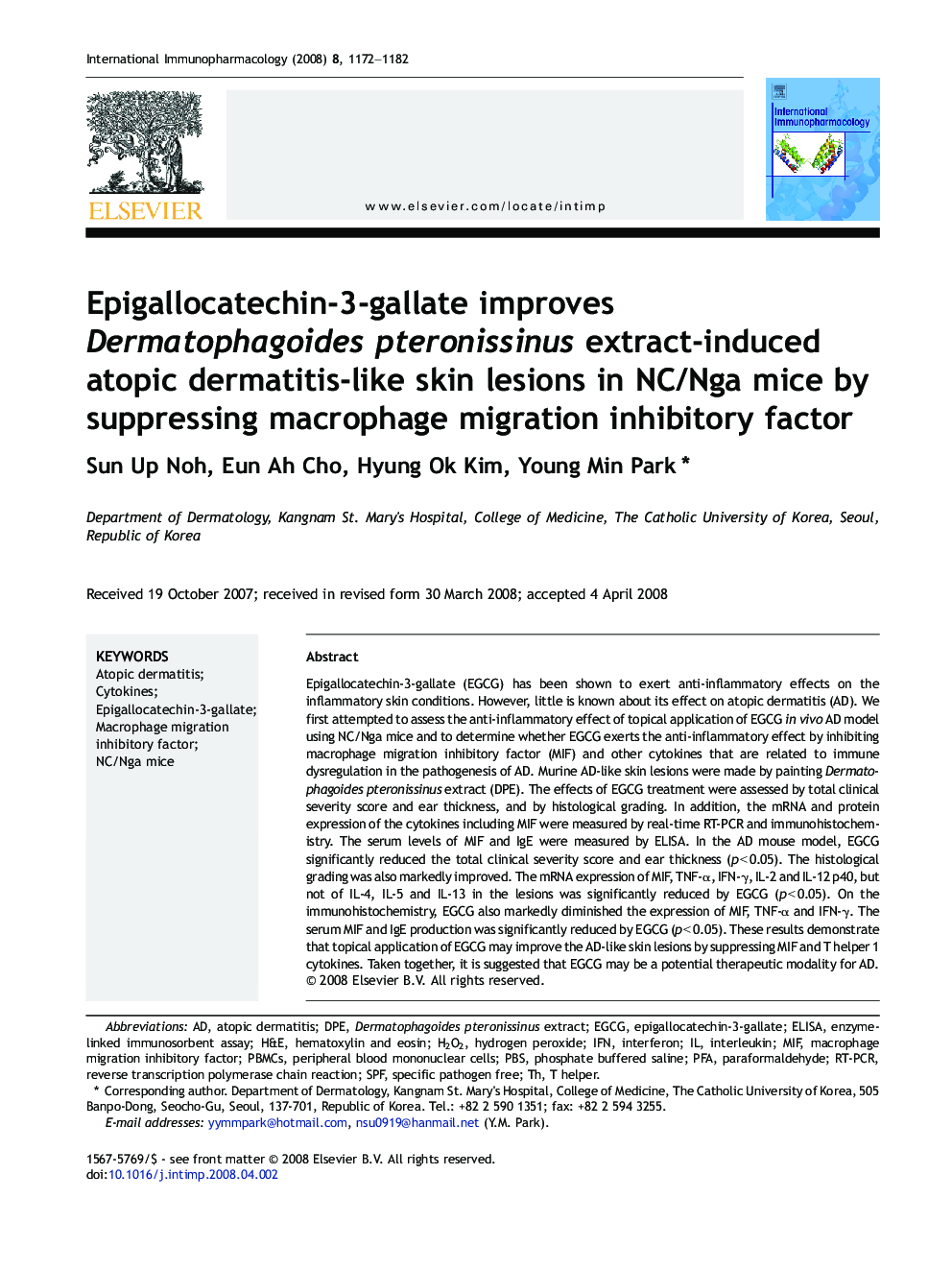| کد مقاله | کد نشریه | سال انتشار | مقاله انگلیسی | نسخه تمام متن |
|---|---|---|---|---|
| 2541679 | 1122670 | 2008 | 11 صفحه PDF | دانلود رایگان |

Epigallocatechin-3-gallate (EGCG) has been shown to exert anti-inflammatory effects on the inflammatory skin conditions. However, little is known about its effect on atopic dermatitis (AD). We first attempted to assess the anti-inflammatory effect of topical application of EGCG in vivo AD model using NC/Nga mice and to determine whether EGCG exerts the anti-inflammatory effect by inhibiting macrophage migration inhibitory factor (MIF) and other cytokines that are related to immune dysregulation in the pathogenesis of AD. Murine AD-like skin lesions were made by painting Dermatophagoides pteronissinus extract (DPE). The effects of EGCG treatment were assessed by total clinical severity score and ear thickness, and by histological grading. In addition, the mRNA and protein expression of the cytokines including MIF were measured by real-time RT-PCR and immunohistochemistry. The serum levels of MIF and IgE were measured by ELISA. In the AD mouse model, EGCG significantly reduced the total clinical severity score and ear thickness (p < 0.05). The histological grading was also markedly improved. The mRNA expression of MIF, TNF-α, IFN-γ, IL-2 and IL-12 p40, but not of IL-4, IL-5 and IL-13 in the lesions was significantly reduced by EGCG (p < 0.05). On the immunohistochemistry, EGCG also markedly diminished the expression of MIF, TNF-α and IFN-γ. The serum MIF and IgE production was significantly reduced by EGCG (p < 0.05). These results demonstrate that topical application of EGCG may improve the AD-like skin lesions by suppressing MIF and T helper 1 cytokines. Taken together, it is suggested that EGCG may be a potential therapeutic modality for AD.
Journal: International Immunopharmacology - Volume 8, Issue 9, September 2008, Pages 1172–1182